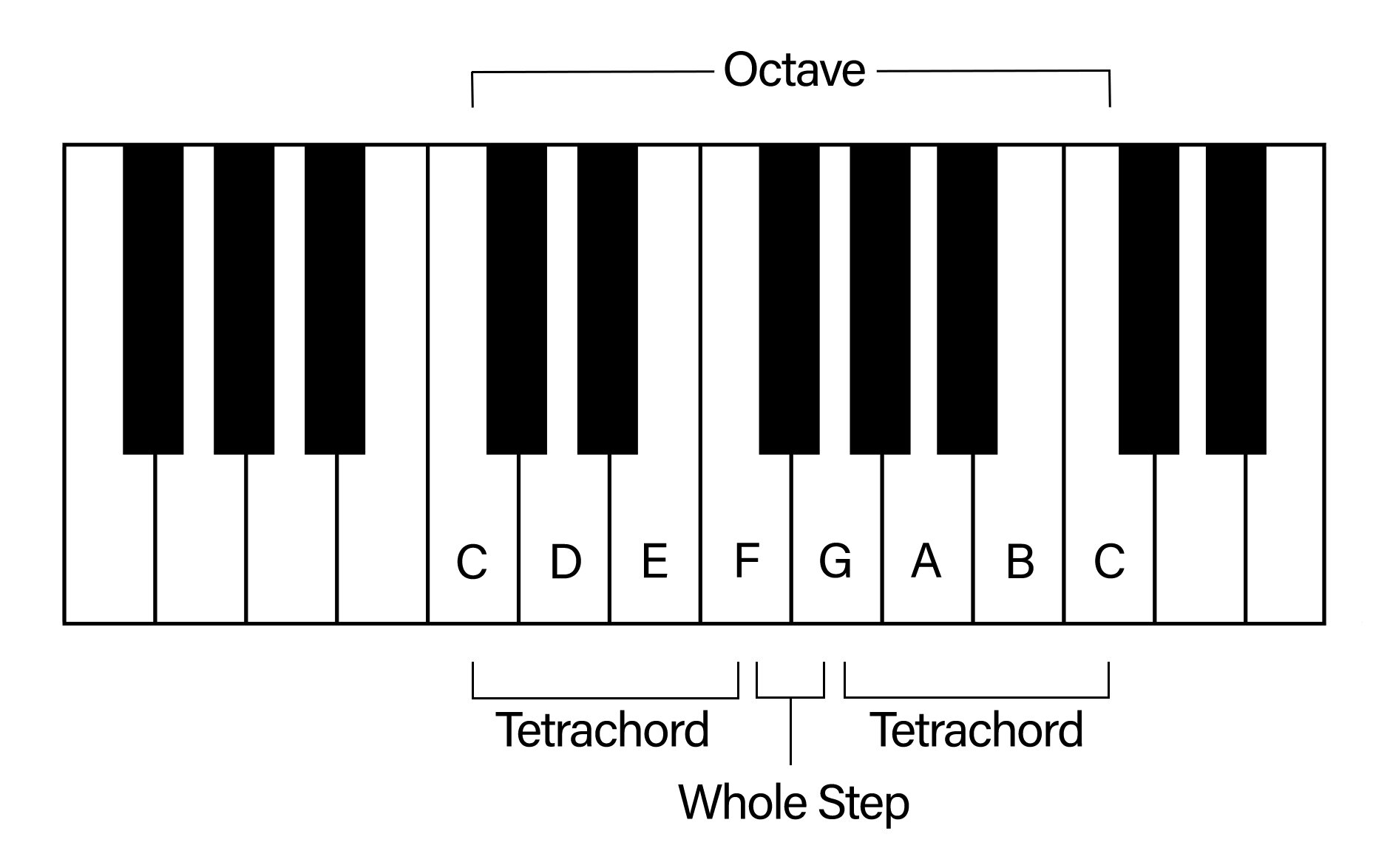Introduction
Learning about the Major Scale and the Chromatic Scale is a great way to start understanding music theory, especially if you are interested in learning the piano. Knowing the structure of these two scales will give you a good basis for learning more complex concepts like Harmony, Counterpoint, or other scales and musical structures.
Two Intervals: The Half Step and The Whole Step
An Interval is the distance between two notes. The Half Step and the Whole Step are Intervals.
Intervals can be harmonic or melodic. A Harmonic Interval consists of two notes played at the same time. A Melodic Interval consists of two notes played one after the other. In music notation, Harmonic Intervals are represented vertically, and Melodic Intervals are represented horizontally. See the examples in the diagram below.
A Half Step is the smallest interval made up of two different notes. A Half Step is also sometimes called a Minor Second, a Semitone, or a Half Tone. To find an example of a Half Step, go to the piano, pick any note, and then find the closest note next to it. The closest note might be a black key or a white key. If you play the two notes in a half step at the same time, you’ve played a Harmonic Interval. If you play them one after the other, you’ve played a Melodic Interval.
A Whole Step is made up of two Half Steps. A Whole Step is sometimes called a Whole Tone or a Major Second. To find a Whole Step on the piano, pick any note, and find any other note two notes away, counting any black key or white key in between. If you play the two notes in a whole step at the same time, you’ve played a Harmonic Interval. If you play them one after the other, you’ve played a Melodic Interval.
The Chromatic Scale
The Chromatic Scale contains all the notes on the piano. Any note that you play on the piano will be a part of the chromatic scale. This may seem like a lot of notes, but the Chromatic Scale is made up of a Twelve-Note Pattern that repeats itself over and over again. Because the Chromatic Scale is made up of 12 different notes, it’s sometimes called Dodecatonic. The below diagram of the piano keyboard shows one octave of the chromatic scale (including the second C on the top as a 13th note).
The black keys in the diagram have two different note names on them. For example, the black key in between C and D has both C# and Db. The reason for this is that these notes are sometimes called different things depending on the musical context. When the same note has two different names like this, the different names are called Enharmonic Equivalents.
The Major Scale
The Musical Alphabet contains these letters: A B C D E F G. The Musical Alphabet, the Half Step, and the Whole Step are the building blocks of the major scale. The major scale uses all of the letters in the Musical Alphabet. It’s made up of Seven Notes. Because it has seven notes, it’s called Heptatonic.
The major scale is made up of a simple pattern:
Whole Step, Whole Step, Half Step, Whole Step, Whole Step, Whole Step, Half Step.
This pattern is sometimes abbreviated as follows:
Whole Whole Half - Whole Whole Whole Half
W W H - W W W H
2 2 1 - 2 2 2 1
The Major Scale is Diatonic. Something is called Diatonic when it uses the 7 note major scale with the pattern of 2 2 1 2 2 2 1 and it uses one musical letter name (C D E F G A B) per note in the scale. The major scale in the key of C major is shown in the diagram below of the piano keyboard.
Tetrachords
The Major Scale can also be broken down into two parts, each of which is called a Tetrachord. A Tetrachord is a series of four notes. The two Tetrachords in the Major Scale are separated by a Whole Step. In the C Major Scale, the first tetrachord is made up of the notes C - D - E - F. The second tetrachord is made up of the notes G - A - B - C.
Tetrachords of the C Major Scale
1st Tetrachord: C - D - E - F
2nd Tetrachord: G - A - B - C
Each Tetrachord has the same interval structure: Whole Step, Whole Step, Half Step.
Thus, the major scale can be represented in terms of two tetrachords with a whole step in between as follows:
Whole Whole Half [Whole] Whole Whole Half
W W H [W] W W H
2 2 1 [2] 2 2 1
Below is a piano diagram showing the two Tetrachords in the C Major Scale.
Contact Dave Long For Piano Lessons or Music Theory Tutoring
Dave Long offers piano lessons in White Plains, NY, live online piano lessons, and piano lessons in Westchester County. If you’re ready to get started with piano, improvisation, or music theory lessons, get in touch!





